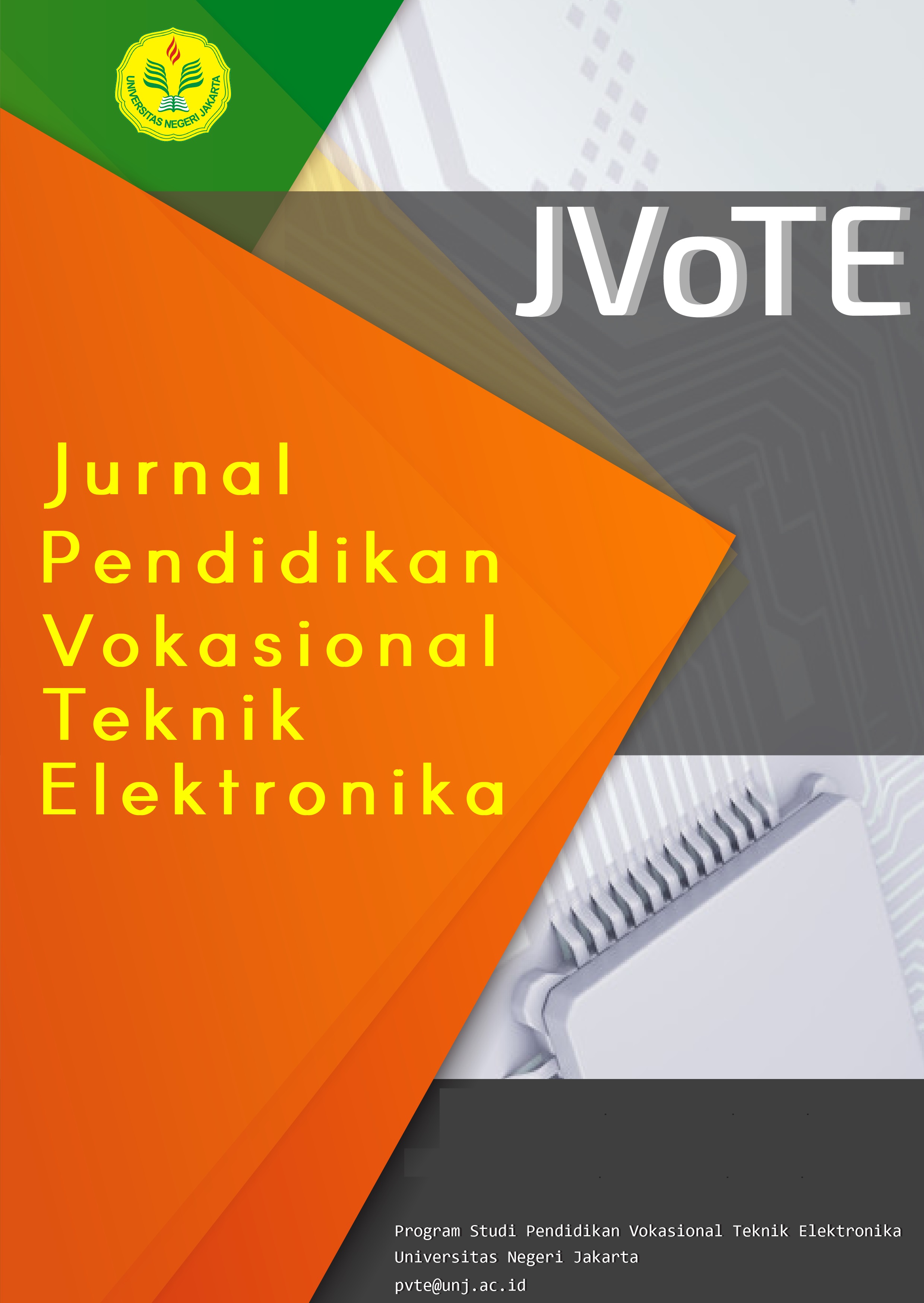Peningkatan Efisiensi Antena Frekuensi 3.5 GHz Menggunakan Teknik Metamaterial Pada Struktur Groundplane
DOI:
https://doi.org/10.21009/jvote.v4i2.39411Keywords:
Microstrip Antenna, Metamaterial, CSRR, Conventional, CST 2014, Return Loss, Bandwidth, VSWR, Gain, FR-4, Dimensions, Performance, EfficiencyAbstract
Goals of this research are to increase the efficiency of the microstrip antenna. Increased efficiency includes reduced dimensions but has good performance (return loss, bandwidth, VSWR, and Gain). This research used the CSRR metamaterial technique in a ground structure with 4 × 4 cell orientation with a working frequency of 3.5 GHz. The research was carried out in the Laboratory of the engineering faculty of Telecomunations Engineering of rthe State University of Jakarta in May- August 2020.Testing the antenna with the CSRR metamaterial wich waas done in two stages: simulation and fabrication. The two antennas are compared in an attempt to measure the effectiveness of the antenna. The simulation uses CST Microwave Studio 2014 software and the antenna has been fabricated and measured using the Anritsu S223E Network Analyzer. The 3.5Ghz microstrip antenna with CSRR with FR-4 substrate was successfully tested and has performance according to predetermined standards. Microstrip antenna with metamaterial on this ground showed an increase in efficiency. This antenna is much more efficient than the metamaterial antenna with the CSRR structure on the patch. This antenna with dimensions of 34 × 33.5 mm succeeded in reducing the antenna by 36% and experiencing an increase in return loss by 38%, bandwidth by 44%, and VSWR by 23%.







